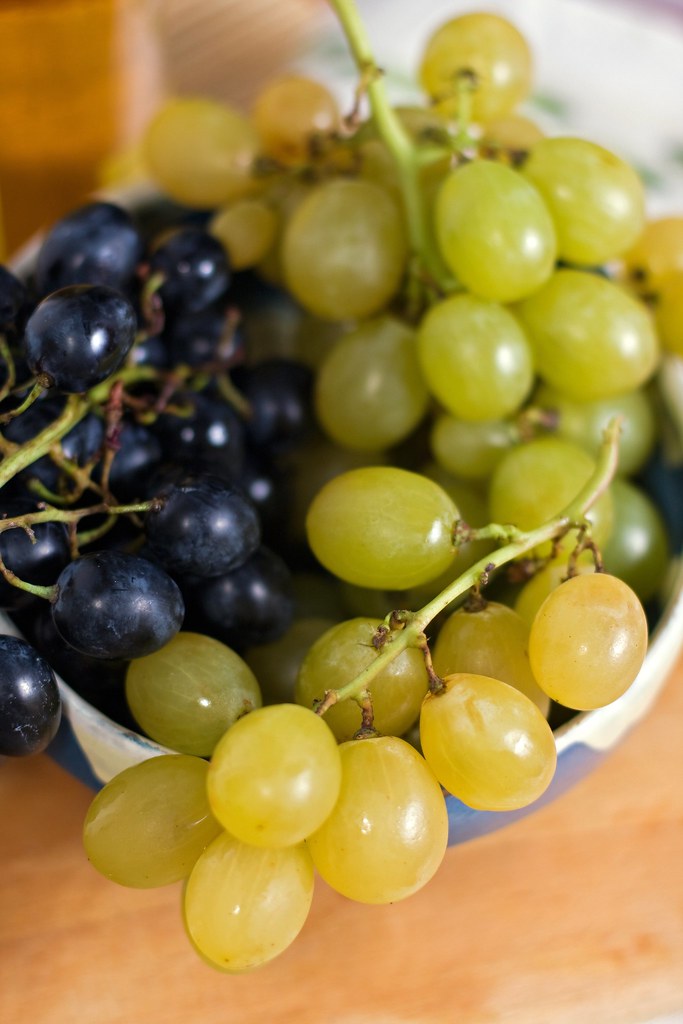We’ve all read the headlines – “Wine is good for you!”, “Wine is bad for you!’, “Wine is good in moderation!”, “Wine is loaded with healthy polyphenols!”, etc etc. The fact of the matter is that if you drink too much alcohol, that’s bad for you. But what about wine with it’s many research-supported health “benefits”? Specifically, wine contains many compounds that have shown to be beneficial in one way or another in human health when isolated, concentrated, or otherwise being the sole compound(s) of focus.

Polyphenols found in wine have been shown to have numerous benefits, including but not limited to their antioxidant, antibacterial, anti-inflammatory, etc properties. While these compounds are well-known for their many benefits, it remains to be seen exactly how much wine one would need to consume in order to actually get any benefit. At a certain point (after not too many glasses), the amount of alcohol consumed would likely negate any of the possible health benefits of the polyphenols to begin with.
In addition to the problem of too much alcohol intake, the health benefits of the various polyphenols are also dependent upon the bioavailability of the compounds themselves in the body. There could be a ton of beneficial polyphenols in a wine, but it won’t do you any good if there is little bioavailability in the body (it’ll just go in-and-out, so to speak).
A study published earlier this year in the journal Food Research International aimed to look at just that – the bioavailability of wine polyphenols. Specifically, they studied the influence of drinking pattern on digestive characteristics and bioavailability of wine polyphenols using an in vitro (i.e. lab-simulated) digestive system.
Brief Methods
I won’t go into the nitty gritty details, but to briefly summarize, this study used a simulated in vitro GI digestion assay. In other words, they used various compounds and media to simulate the digestive system. The researchers focused on four different parts of the digestive system: the mouth, stomach, small intestine, and the colon.
There were also two drinking patterns tested in this study: drinking before a meal, and drinking after a meal. The researchers altered the simulated gastric fluid to mimic both of these scenarios. The amount of wine consumed was also studied.
The wines used in this study were Cabernet Sauvignon and Chardonnay from the Wine Technology Development Center of China Agricultural University.

The wine samples were mixed with the simulated mouth digestion fluids, mixed, and analyzed. From there, samples of this wine:mouth digestion complex was added to the simulated stomach digestion systems. After mixing and analysis, samples from the wine:mouth:stomach digestion complex were added to the small intestine digestion complex. Finally, after mixing and analysis, samples from the wine:mouth:stomach:small intestine digestion complex was added to the simulated colon digestion system.
The following were measured and analyzed in samples from each digestion step: total phenolics, total flavonoids, total flavan-3-ols, total anthocyanins, α-amylase inhibition, α-glucosidase inhibition, and bacterial count.
Selected Results
- TOTAL POLYPHENOLS:
- Mouth digestion showed good release of total polyphenols – no difference between wines.
- Stomach digestion showed good release of total polyphenols – 88.59%-95.86% and 76.04%-85.49% for red and white wines, respectively.
- Small intestine digestion (the “serum available” fraction — what has the ability to be absorbed) showed release rates of 40-50%.
- This indicates that about half of the polyphenols in the wines were absorbed by the small intestine.
- As the amount of wine consumed increased, the total polyphenols in the serum-available fraction decreased for both red and white wines.
- Colon digestion showed a release rate of around 20%.
- After colon digestion (aka colon fermentation), about 10% of the polyphenols were left in the colon.
- As the amount of wine consumed increased, the total polyphenols in the colon-available fraction increased.
- Total polyphenol release rates in the serum for white wine were significantly higher than for red wine.
- The body might be able to absorb the polyphenols from white wines better than those in red wines.
- Drinking before a meal led to lower total polyphenol levels in the simulated digestive system compared to drinking after a meal.
- Drinking after a meal led to higher total polyphenol levels in the serum and lower colon-available levels.
- Total polyphenols appear to be better absorbed by the body when drinking after a meal compared to drinking prior to a meal.
- TOTAL FLAVONOIDS:
- Total flavonoids showed good release in both mouth and stomach digestion.
- Total flavonoids were noted to be higher in the stomach after drinking red wine compared to white wine.
- Release rates of total flavonoids were higher than the release rates of total polyphenols.
- Patterns observed for total flavonoids in small intestine and colon digestion were similar to the patterns observed for total polyphenols.
- As the amount of wine consumed increased, total flavonoid content in the serum decreased for both red and white wines.
- Colon-available total flavonoids and total flavonoids remaining in the colon increased with increased wine consumption.
- Total flavonoids in the serum were higher when drinking after a meal compared to when drinking prior to a meal.
- Drinking after a meal led to a better bioaccessibility of total flavonoids.
- TOTAL FLAVAN-3-OLS:
- Total flavan-3-ols behaved mostly the same as the total flavonoids in the simulated digestive system.
- There were no significant differences in total flavan-3-ols in the serum comparing the different drinking levels.
- Colon-available total flavan-3-ols and total flavan-3-ols present in the colon after digestion increased with increased amount consumed in both red and white wines.
- Total flavan-3-ols in the serum were significantly higher in the drinking after a meal group compared with drinking before a meal.
- Total flavan-3-ols appear to be better absorbed when drinking after a meal.
- TOTAL ANTHOCYANINS:
- In the stomach contents for the drinking before the meal treatment, total anthocyanins were higher than in wine, and increased as the amount of wine consumed increased.
- INDIVIDUAL PHENOLIC ACIDS:
- Most individual phenolic acids showed similar patterns as the total polyphenols.
- Caffeic acid and chlorogenic acid behaved a little differently than the rest:
- Caffeic acid increased for red and white wines after stomach digestions.
- Chlorogenic acid decreased much more than other phenolic acids after stomach digestion.
- Gentisic acid was not detected in some red wine treatment groups after colon fermentation.
- Gallic acid, gentisic acid, vanillic acid, syringic acid, and caffeic acid were not detected in white wine treatment groups.
- Total hydroxygenzoic acid in the serum increased after stomach digestion and decreased as red wine consumption levels increased.
- INDIVIDUAL FLAVAN-3-OLS:
- Most individual flavan-3-ols studied increased after stomach digestion in red wines and decreased after stomach digestion in white wines.
- All 5 individual flavan-3-ols studied decreased in the serum-available fraction as well as the colon-available fraction.
- ANTIOXIDANT CAPACITY:
- After stomach digestion, antioxidant capacity was found to be higher in the red wine treatments compared with the white wine treatments.
- After small intestine digestion, antioxidant capacities in the serum-available and colon-available fractions significantly decreased.
- After colon fermentation, antioxidant capacities continued to decrease.
- Antioxidant capacity in serum decreased with increasing consumption of both red and white wines.
- Antioxidant capacity in colon-available fraction increased with increased consumption of wines.
- Higher serum antioxidant capacity was noted in the higher levels of consumption when drinking after a meal.
- α-AMYLASE INHIBITION:
- α-amylase inhibition ratios for red wine was 32.18%, and for white wine was 7.67%.
- After stomach digestion, a-amylase inhibition decreased for both red and white wines.
- α-amylase inhibition continued to decrease in serum-available and colon-available fractions.
- α-amylase inhibition was greater in the drinking after a meal treatment compared with the drinking before a meal treatment.
- α-GLUCOSIDASE INHIBITION:
- α-glucosidase inhibition ratios were higher than a-amylase ratios for both red and white wines.
- After stomach digestion, α-glucosidase inhibition increased for the red wine treatment.
- In the serum-available fraction, α-glucosidase inhibition was half of what was observed in the stomach.
- In the colon-available fraction and after colon fermentation, α-glucosidase inhibition decreased further.
- With increased wine consumption, α-glucosidase inhibition decreased.
CONCLUSIONS
Overall, the results of this study showed that what and how much wine one drinks significantly impacts the bioaccessibilty and other activity of wine polyphenols.
One interesting and unexpected result (at least to me) was that while red wines were shown to have higher polyphenol levels, antioxidant capacity, etc, than white wine, the white wine had better bioaccessibility of those compounds than red. So while red may sound “healthier” on paper, the white wine in this study showed better bioaccessiblity than the red. In other words, even though red wine has overall higher total polyphenols, etc, the digestive system is better able to absorb those from white wines.
Additionally, drinking more wine does not increase the amounts of health-benefitting polyphenols, etc etc absorbed in the body. So if you’re drinking more to increase the amount of the “good stuff” in your system, it isn’t going to work. Your body can only absorb so much, and then after too much consumption the trend decreases. Perhaps it’s interactions with the alcohol that influence the bioaccessibility of these compounds, and a moderate amount is ideal for maximum absorption.

Finally, these results indicate that your body better absorbs the polyphenols and other health-benefitting compounds in wine when that wine is consumed after the meal. Drinking on an empty stomach was not as effective in absorbing these compounds into the body, while drinking after a meal helped improve the bioaccessibility of these compounds to ultimately make it easier for the body to absorb them.
While this study was very interesting, there is one huge caveat to make note of: this wasn’t a true digestive system that was studied. It was a simulated digestive system that, while is certainly very similar in some regards to a real digestive system, it is still missing quite a lot (read: a real human body) and thus might be missing some very important interactions that one would not see using a simulated system. I may have written “absorbed by the body” in a few places, but that was meant more as a potential and not a definite thing.
The main take-aways here are (which you can take with a grain of salt since it was just a simulated system and not the real human body):
- Red wine may have higher total polyphenols from the start, but these compounds have better bioaccessibility in white wines.
- Drinking more wine does not mean you get more polyphenols in the body. Quite the opposite, actually.
- Drinking after a meal allows for greater absorption of total polyphenols and other compounds than drinking before a meal.
I think I’m not going to worry about whether or not wine is “healthy” for me, and I am just going to go pop open a bottle and enjoy it! Cheers!
Source:
